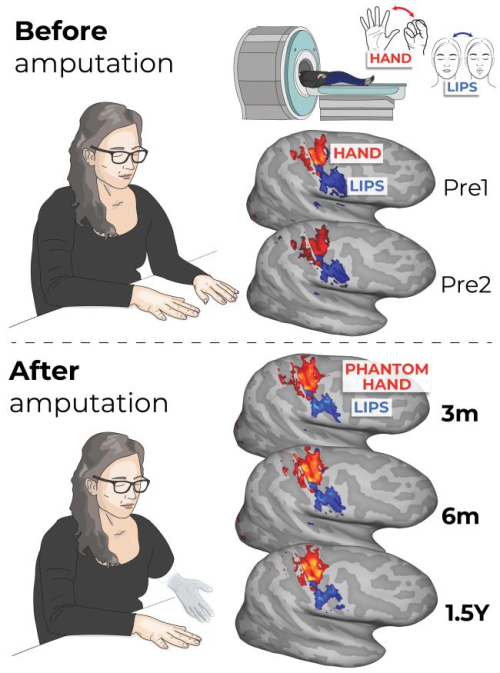Discover the Meaning of Heart Rate: What’s a Heart Rate Explained
Your heart rate is how many times your heart beats in 60 seconds. Use it to determine if your physical activity is at the ideal level for you.

What is heart rate?
Your heart rate is the number of times your heart beats in a minute. Your body automatically controls your heartbeat to match whatever you’re doing or what’s happening around you. That’s why your heartbeat gets faster when you’re active, excited or scared. And it drops when you’re resting, calm or comfortable.
When is a heart rate check performed?
A healthcare provider can check your heart rate anytime. They may check it during an annual exam, after an injury or before surgery. You can check it yourself to know if you’re working out hard enough.
A heart rate that’s too fast or too slow can be a sign of heart or other health problems. The ability to feel your heart rate throughout your body is also a potential way for providers to diagnose medical conditions.
Test Details
How does a heart rate test work?
This noninvasive test involves lightly pressing your three longest fingers together against your skin. You should be able to feel the pulses of blood going through certain arteries.
Once you’ve found your pulse (the easiest places are usually your neck or wrist, at the carotid or radial artery, respectively), you can figure out your heart rate by counting the number of heartbeats in 60 seconds.
The number you get is your “beats per minute,” which is your heart rate. The abbreviation for beats per minute is “bpm.”
The heart rate you have when you’re not active is your resting heart rate. You can also check it during or immediately after physical activity. Finding your heart rate during physical activity is a key way to know if your effort is intense enough or too intense.
If you’re wearing a fitness tracking device, it might figure your heart rate out for you.
Results and Follow-Up
What type of results do you get and what do the results mean?
Right away, you’ll get a number that represents your heart rate (how many times your heart beats in one minute). Your number can tell you if you’re in the normal range or not.
What is the normal heart rate?
Your resting heart rate depends on how old you are and your overall health. The younger you are, the higher your heart rate tends to be.
The expected resting heart rate ranges for children in beats per minute are:
- Newborns (birth to 4 weeks): 100 to 205 bpm*.
- Infant (4 weeks to 1 year): 100 to 180 bpm*.
- Toddler (1 to 3 years): 98 to 140 bpm*.
- Preschool (3 to 5 years): 80 to 120 bpm.
- School-age (5 to 12 years): 75 to 118 bpm.
- Adolescents (13 to 18 years): 60 to 100 bpm.
For adults (ages 18+), the expected resting heart rate range is 60 to 100 bpm.
*These rates are for children when they’re awake. They’ll likely be lower when they’re asleep.
What are my target and maximum heart rates?
Your target heart rate is the ideal range to keep your heart in during moderate-intensity physical activity (like a brisk walk). This amount of intensity is ideal because it’s high enough that it’s good for your heart but not so high that you strain yourself.
If you want to work out very strenuously, you can go up to around 95% of your maximum heart rate. You should be careful not to go too high, though. If you go too high, the potential risks outweigh the benefits.
If you don’t get regular physical activity, you should talk to your healthcare provider before starting a workout routine. This is especially important if you have any health problems, particularly issues with your heart, breathing or circulation. Your healthcare provider is the best person to guide you on safe, effective ways to stay active without putting your overall well-being at risk.
Use the following chart to find your maximum and target heart rates.
| Age | Maximum | Target | ||
|---|---|---|---|---|
| 20 | 200 | 120 to 160 | ||
| 25 | 195 | 117 to 156 | ||
| 30 | 190 | 114 to 152 | ||
| 35 | 185 | 111 to 148 | ||
| 40 | 180 | 108 to 144 | ||
| 45 | 175 | 105 to 140 | ||
| 50 | 170 | 102 to 136 | ||
| 55 | 165 | 99 to 132 | ||
| 60 | 160 | 96 to 128 | ||
| 65 | 155 | 93 to 124 | ||
| 70 | 150 | 90 to 120 | ||
| 75 | 145 | 87 to 116 | ||
| 80 | 140 | 84 to 112 | ||
| 85 | 135 | 81 to 108 | ||
| 90 | 130 | 78 to 104 | ||
| 95 | 125 | 75 to 100 | ||
| 100 | 120 | 72 to 96 |
If you want to calculate your maximum and target heart rates yourself, you can use these formulas:
- 220 - your age = maximum.
- Maximum x 0.6 = low end of target range.
- Maximum x 0.8 = high end of target range.
What does high heart rate mean?
When your resting heart rate is over 100 bpm, providers call this tachycardia. This means you may have an issue with your heart’s conduction system that signals your heart to beat. Examples of this type of issue include atrial flutter and ventricular tachycardia.
But a high heart rate isn’t always the sign of a heart rhythm issue (arrhythmia). You may have a high heart rate when you have:
- Dehydration.
- Infection.
- Fever.
- Pain.
- Anxiety.
- Thyroid disorders.
Your heart rate might be higher if you’re stressed or worried, or even if the weather is hot and humid. These are temporary situations — they don’t last. Try checking your heart rate again when these conditions don’t affect you.
What does low heart rate mean?
When your resting heart rate is under 60 bpm, providers call it bradycardia. This means you could have a problem with the signals that tell your heart when to beat. An example of this is a heart block.
If you take a beta-blocker medicine, it may cause you to have a low heart rate. This isn’t a reason to worry. Odds are, you’re taking the medicine to lower your blood pressure or make your heart’s job easier.
If you’re very physically active, you might have a resting heart rate under 60 beats per minute. Competitive athletes can have resting heart rates as low as 40 bpm or so. For the average person, however, that rate would be dangerously low.
If the results are abnormal, what are the next steps?
You may need to contact your healthcare provider if your resting heart rate falls outside of the normal range. A heart rate that’s too high or too low might be a sign of a problem.
When should I call my doctor?
If you have any concerns about your heart rate, you should talk to your primary healthcare provider. They can answer your questions or refer you to a specialist if necessary.
Signs you should talk to your provider about your heart rate include:
- A dizzy feeling when your heart rate is high.
- A resting heart rate that’s consistently too fast or too slow.
- A heartbeat that skips or is irregular.
- If you feel a vibrating sensation when taking your pulse instead of a single “thump” when taking your pulse. This is called a “thrill,” and it can be a sign of certain heart and circulatory problems.
- If you have heart palpitations (being aware of your own heartbeat without feeling for your pulse).
You should also see your primary care provider (PCP) at least once a year for an annual checkup or physical. Taking your heart rate is a normal part of that visit, and it’s also a way your provider can catch many problems early (including dangerous problems that have symptoms). Your provider can treat many of these issues if they catch them early enough.
Share
What's Your Reaction?
 Like
0
Like
0
 Dislike
0
Dislike
0
 Love
0
Love
0
 Funny
0
Funny
0
 Angry
0
Angry
0
 Sad
0
Sad
0
 Wow
0
Wow
0















